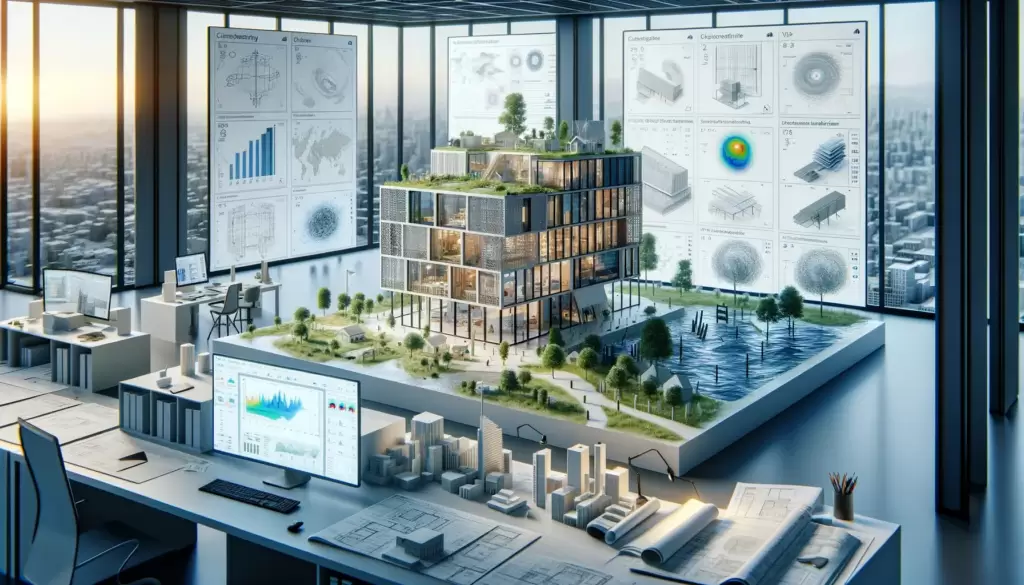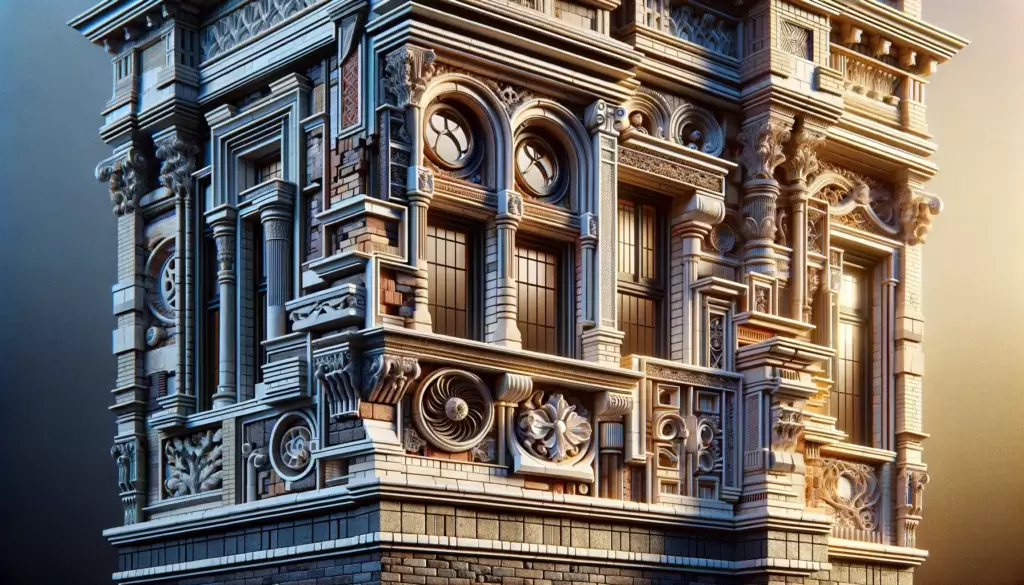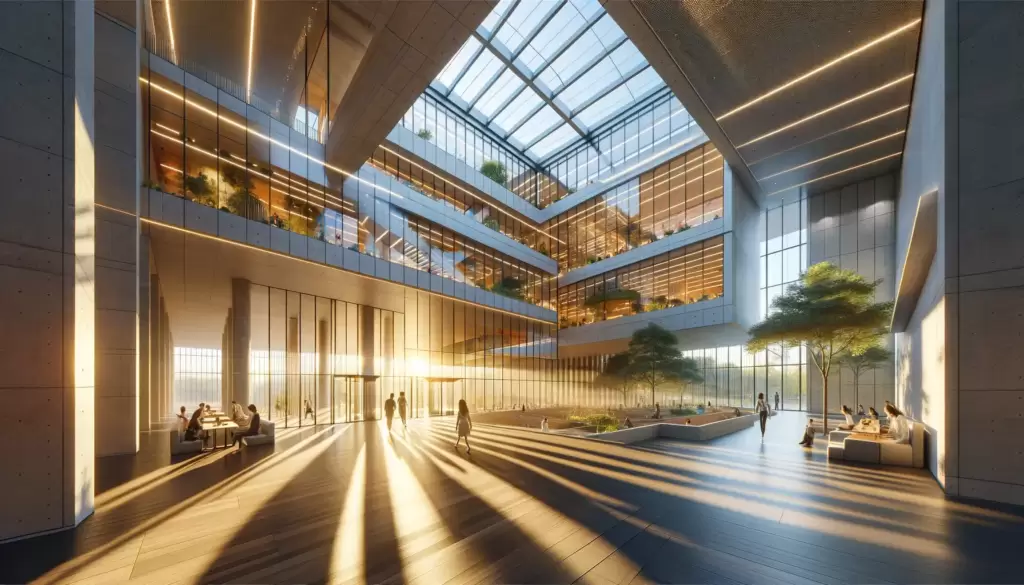
Table of Contents
1. Understanding Climate Resilience
Understanding climate resilience is crucial in the design of sustainable and adaptable architectural structures. It goes beyond simply withstanding extreme weather events, but encompasses a holistic approach to minimizing environmental impact and promoting long-term viability. Architects must consider the local climate, future projections, and social context when designing for resilience, integrating elements like passive solar design, green roofs, and natural ventilation systems to mitigate the effects of climate change.
Furthermore, embracing nature-based solutions can enhance climate resilience in architecture by mimicking natural processes to facilitate adaptation. Employing strategies such as rainwater harvesting, urban greening initiatives, and integrating native vegetation into designs can improve stormwater management and reduce urban heat island effects. Understanding that resilient architecture is not just about building stronger structures but also fostering ecosystems that support human well-being is pivotal in creating sustainable built environments capable of withstanding the challenges posed by a changing climate.
2. Incorporating Sustainable Materials and Techniques
Incorporating sustainable materials and techniques is essential for designing climate-resilient architecture. Using recycled or reclaimed materials can significantly reduce the environmental impact of construction while adding character and uniqueness to a project. Additionally, embracing techniques such as passive design, natural ventilation, and daylight harvesting can decrease energy consumption and improve indoor air quality.
Architects can also explore biophilic design principles that integrate natural elements into built environments, creating spaces that foster a deeper connection with nature. Incorporating green roofs, living walls, and rainwater harvesting systems not only improves the energy efficiency of buildings but also contributes to mitigating urban heat island effects and reducing stormwater runoff. By utilizing these sustainable materials and techniques, architects can create climate-resilient designs that prioritize environmental stewardship while offering innovative solutions to address the challenges of climate change in the built environment.
3. Designing for Extreme Weather Events
Extreme weather events are becoming increasingly common due to climate change, presenting a unique challenge for architects and designers. It’s no longer enough to simply create aesthetically pleasing structures; they must also be able to withstand the forces of nature. Designing for extreme weather requires a holistic approach that considers not only the immediate impact of storms, floods, and heatwaves but also the long-term resilience of the built environment.
One innovative solution is the incorporation of green infrastructure into architectural design. Green roofs, permeable pavements, and rain gardens can help manage excess water during heavy rainfall and reduce flooding in urban areas. Additionally, passive design strategies such as natural ventilation and solar shading can help mitigate the effects of heatwaves and reduce reliance on energy-intensive cooling systems. By integrating these features into architectural plans, designers can create buildings that are not only resilient but also contribute positively to their surrounding ecosystems.
Furthermore, it’s crucial to consider community-centered design in addressing extreme weather events. Engaging with local residents and stakeholders can provide valuable insights into specific vulnerabilities and needs within a community. This collaborative approach empowers individuals to take an active role in building climate-resilient structures that prioritize safety and usability during extreme weather conditions.
4. Integrating Passive Design Strategies
Passive design strategies are a cornerstone of climate-resilient architecture, offering innovative ways to reduce energy consumption and reliance on mechanical systems. By integrating passive solar design, natural ventilation, and thermal mass principles, architects can create buildings that respond directly to the local climate. This approach not only minimizes operational costs but also enhances occupant comfort and well-being.
One key insight is the potential for passive design to harmonize with advanced technologies, such as building-integrated photovoltaics and smart sensors. These elements can further optimize energy performance while maintaining a strong connection to nature and the surrounding environment. Additionally, by prioritizing passive strategies in the initial design stages, architects can reduce the need for retrofitting or costly modifications in the future. Embracing these integrated solutions marks an exciting paradigm shift towards more sustainable and resilient architectural practices.
Integrating passive design strategies goes beyond technical considerations; it embodies a holistic approach that considers cultural contexts, social dynamics, and ecological connections. This broader perspective emphasizes the importance of engaging stakeholders at various levels to ensure that sustainable solutions align with community needs. Furthermore, actively promoting awareness about the benefits of passive design can spark greater appreciation for environmentally conscious architecture among clients and end-users alike. As climate resilience becomes increasingly urgent, embracing integrated passive strategies empowers architects to make meaningful contributions towards a more sustainable built environment.
5. Embracing Nature-Based Solutions
Embracing nature-based solutions in architecture offers a multitude of benefits beyond just mitigating the effects of climate change. By incorporating natural elements such as green roofs, rain gardens, and permeable pavements into our designs, we not only reduce carbon emissions but also improve air quality and promote biodiversity. These solutions harness the power of nature to create resilient built environments that are better equipped to withstand extreme weather events.
Furthermore, integrating nature-based solutions into architectural design allows for a more holistic approach to sustainability. It encourages a shift towards regenerative and restorative practices that prioritize the well-being of both humans and ecosystems. Embracing these strategies also fosters a deeper connection with the environment, sparking greater awareness and appreciation for the natural world among building occupants. As architects embrace nature-based solutions, they are not only designing for climate resilience but also cultivating spaces that nourish and inspire those who inhabit them.
6. Engaging with Local Communities and Authorities
Engaging with local communities and authorities is vital in designing for climate resilience in architecture. It goes beyond simply creating structures; it involves understanding the needs and concerns of the people who will inhabit these spaces. By working closely with local community leaders, architects can gain valuable insight into the unique environmental challenges faced by different regions, leading to more effective and sustainable design solutions.
Furthermore, collaborating with local authorities ensures that architectural projects align with existing regulations and policies, fostering a harmonious relationship between development and governance. This collaborative approach not only promotes social inclusion but also improves the overall resiliency of a community in the face of climate change. Ultimately, engaging with local communities and authorities fosters a sense of ownership among stakeholders, resulting in more successful implementation of climate-resilient architectural designs.


7. Conclusion: Creating a More Resilient Built Environment
In conclusion, creating a more resilient built environment is not just a theoretical concept but a practical necessity in today’s rapidly changing climate. As architects and designers, we must embrace innovative approaches to design that prioritize adaptive and sustainable features. This may involve incorporating renewable energy sources, utilizing green infrastructure, and implementing passive design strategies to mitigate the impact of extreme weather events.
Moreover, fostering community engagement and collaboration is essential for the successful creation of a resilient built environment. By involving local stakeholders in the planning and design process, we can ensure that our structures are not only resilient but also culturally relevant and inclusive. Ultimately, by designing with climate resilience in mind, we have the opportunity to shape a more sustainable future that benefits both people and the planet.


